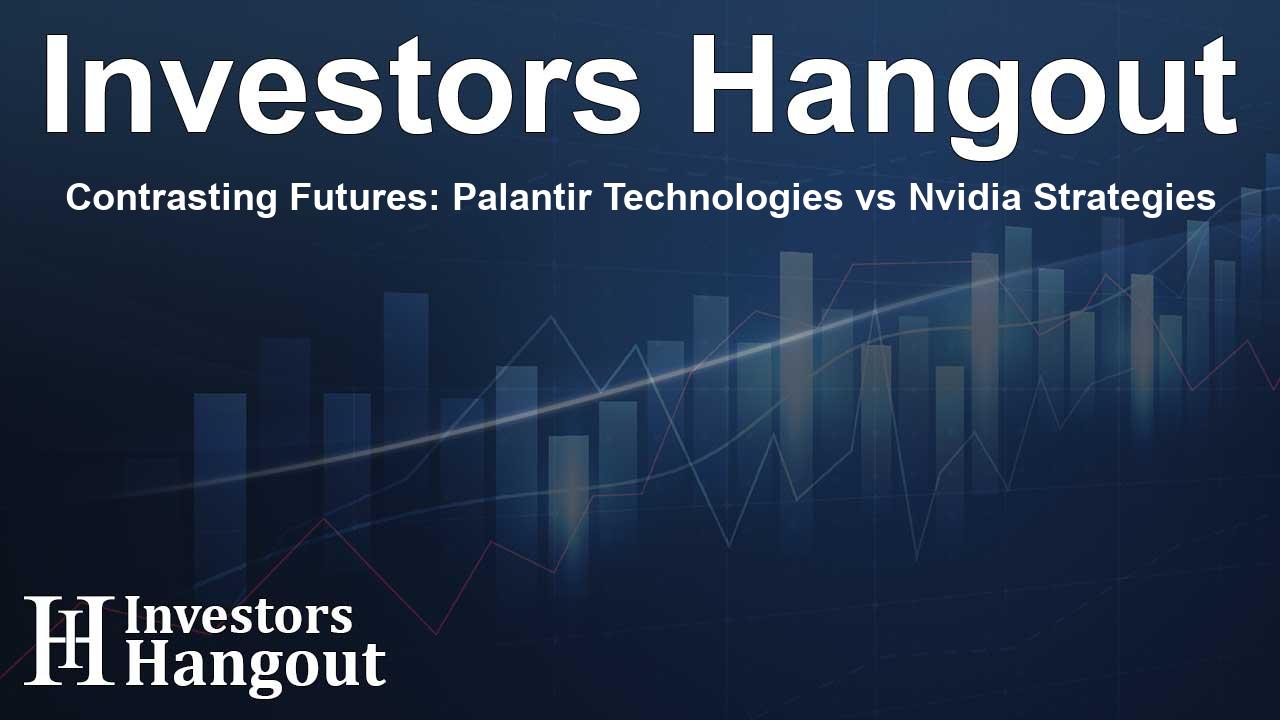Contrasting Futures: Palantir Technologies vs Nvidia Strategies

Analyzing Palantir Technologies and Nvidia
Palantir Technologies (NYSE: PLTR) and Nvidia (NASDAQ: NVDA) have emerged as leading players in the artificial intelligence (AI) sector, garnering significant attention from investors. The year-to-date performances of these stocks have been remarkable, boasting returns of 132% and 150%, respectively. However, industry analysts predict diverging trends for these two companies in the coming year.
Market Expectations for Palantir Technologies
Wall Street analysts are less than optimistic about Palantir’s future, projecting a median price target of $27 per share, reflecting a potential 32% decline from its current price near $40. This outlook positions Palantir as the most overvalued stock within the S&P 500, according to assessments that measure the difference between its current market price and the median target evaluated by analysts.
Palantir has its origins rooted in the development of analytics software intended for government agencies, specifically targeting counterterrorism and military operations. Since then, it has broadened its clientele to include various international governments and commercial organizations. The company's platforms, Foundry and Gotham, utilize advanced data analytics and machine learning to support enhanced decision-making processes across sectors.
Despite some accolades regarding its cutting-edge technology, Palantir has faced criticism for its complex software architecture, which some clients find challenging to use without extensive consulting support. Recent reviews have placed Palantir among lower rankings in critical areas such as data integration capabilities.
For the most recent quarter, Palantir reported a notable increase in revenue by 27%, reaching $678 million. This growth marks the fifth consecutive quarter of accelerated sales, alongside an impressive 80% rise in non-GAAP net income, showcasing the company’s operational efficiency. Yet, the crux of the matter lies in its valuation, expected by analysts to suggest earnings growth at 21% annually through 2026—raising questions about the sustainability of its current stock price.
Nvidia’s Promising Trajectory
In contrast, Nvidia reflects a more favorable outlook, with a median price target of $150 per share, indicating a potential 20% upside from its current trading level around $125. Nvidia is regarded as the pioneer in generating graphics processing units (GPUs), essential for computationally intense operations required in AI training and inference. The company's ability to dominate GPU sales, accounting for a whopping 98% of shipments, positions it at the forefront of the AI chip market, which it currently controls over 80%.
The impressive financial performance posted by Nvidia in its latest quarter revealed a staggering 122% increase in revenue, totaling $30 billion, fueled by the heightened demand for AI-related hardware and software. Although a slight drop in gross profit margins was noted, analysts remain optimistic, projecting Nvidia's earnings growth at an impressive 35% annually through fiscal 2027, further reinforcing its competitive edge and attractiveness as an investment.
Investment Considerations for Both Stocks
With current market analysis indicating contrasting paths for Palantir and Nvidia, investors are presented with crucial decisions. While optimism surrounds Nvidia's prospects, many investment advisors suggest caution regarding Palantir. Given the extensive discrepancies in valuations, it may be advisable for investors to reevaluate their portfolios, particularly regarding exposure to Palantir Technologies. Conversations about market entry points and potential corrections in stock prices for each entity could provide essential guidance moving forward.
Conclusion: The Investment Landscape
Investors are advised to engage in comprehensive evaluations of both Palantir Technologies and Nvidia as they navigate the ever-evolving landscape of AI. The stark differences in analyst predictions reflect broader trends and sentiments that can influence market movements. With Nvidia positioned for notable growth and Palantir facing significant challenges, stakeholders must adapt their strategies to safeguard their investments effectively.
Frequently Asked Questions
What are the contrasting projections for Palantir and Nvidia?
Analysts project a 32% downside for Palantir and a 20% upside for Nvidia based on their respective median price targets.
Why is Palantir considered overvalued in the S&P 500?
Palantir's current stock price significantly exceeds the median price target set by analysts, categorizing it as the most overvalued stock in its peer group.
What are the core differences between Palantir and Nvidia's business models?
Palantir focuses on data analytics for government and commercial sectors, while Nvidia specializes in GPUs and AI hardware, enhancing computational efficiency across diverse applications.
How have recent financial results impacted investor sentiment for both companies?
Nvidia's robust financial growth has bolstered investor confidence, while Palantir's mixed performance has led to a more cautious outlook among market analysts.
What should investors consider before buying shares in Palantir or Nvidia?
Investors should evaluate market trends, analyst recommendations, and individual financial performance and valuations before making any stock purchases.
About The Author
Contact Lucas Young privately here. Or send an email with ATTN: Lucas Young as the subject to contact@investorshangout.com.
About Investors Hangout
Investors Hangout is a leading online stock forum for financial discussion and learning, offering a wide range of free tools and resources. It draws in traders of all levels, who exchange market knowledge, investigate trading tactics, and keep an eye on industry developments in real time. Featuring financial articles, stock message boards, quotes, charts, company profiles, and live news updates. Through cooperative learning and a wealth of informational resources, it helps users from novices creating their first portfolios to experts honing their techniques. Join Investors Hangout today: https://investorshangout.com/
The content of this article is based on factual, publicly available information and does not represent legal, financial, or investment advice. Investors Hangout does not offer financial advice, and the author is not a licensed financial advisor. Consult a qualified advisor before making any financial or investment decisions based on this article. This article should not be considered advice to purchase, sell, or hold any securities or other investments. If any of the material provided here is inaccurate, please contact us for corrections.
